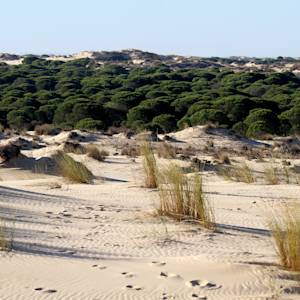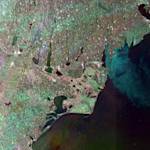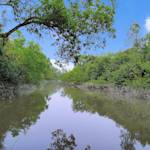Russian Wetland Tundra
2023 CE • Northern Russia
"On the northern edge of Russia lies one of the most unusual landscapes in the world. The Arctic tundra is one of the harshest and most extreme places on the planet. By winter it’s battered by vicious storms, encased in darkness and ice. The sun barely rises and temperatures can dip to minus 40 degrees. But spring brings the sun and with light comes an explosion of life. For a few short months the tundra is transformed into one of the richest habitats on earth and as the ice melts . . . As temperatures rise, this once silent, seemingly barren place fills with the sound of water as it moves through the vast maze of lakes, marshes, pools and streams that criss-cross this wilderness. Waterways once frozen solid in winter now flow through this network of wetlands, feeding into the vast river deltas . . . By the end of the breeding season, the Russian Arctic tundra is thought to hold a staggering eighty to ninety million individual wildfowl, including Bewick’s swans, greater white-fronted geese and long-tailed ducks. Add to this a wealth of other breeding Arctic birds, from grey plover to snowy owls that visit during the summer, as well as mammals like the Arctic fox, musk ox and bears and it’s easy to see why the tundra’s wetland habitats are so valuable for wildlife . . . Scientists warn that climate change with its summer droughts and winter rains is affecting this region, bringing warmer, wetter weather. This in turn is thawing the carbon-rich permafrost soil at such a rate that the arctic is being turned from a carbon sink into a carbon emitter."
"Wetlands of the world: The Arctic tundra, Russia," Wildfowl & Wetlands Trust, January 15, 2021.
Image: GRID-Arendal via Flickr, Attribution-NonCommercial-ShareAlike 2.0 Generic (CC BY-NC-SA 2.0)


Learn about Maya Lin’s fifth and final memorial: a multi-platform science based artwork that presents an ecological history of our world - past, present, and future.

Discover ecological histories and stories of former abundance, loss, and recovery on the map of memory.

Learn how we can reduce our emissions and protect and restore species and habitats – around the world.

See how art can help us rethink the problems we face, and give us hope that each one of us can make a difference.

Help make a global memorial something personal and close to home. Share your stories of the natural world.


